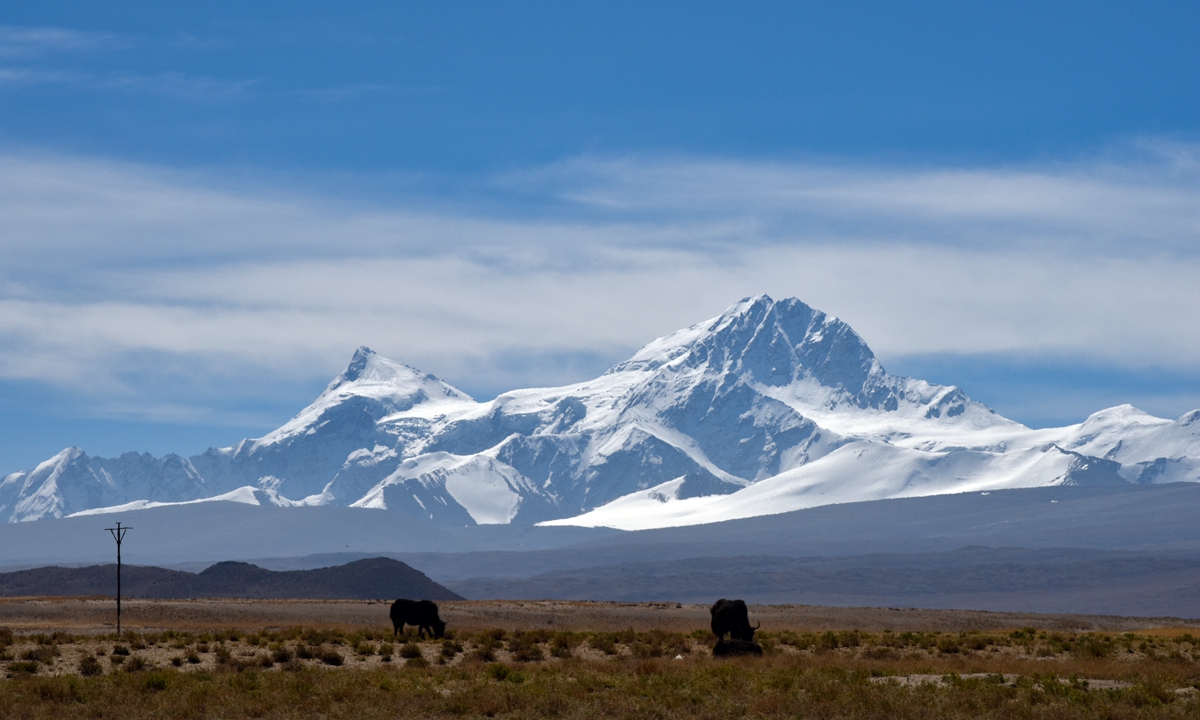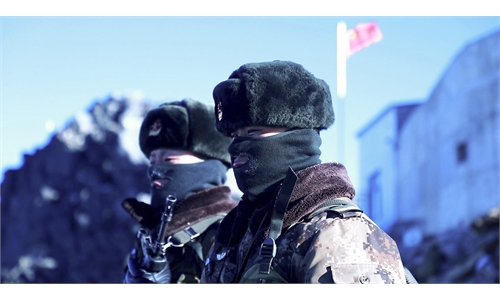
The view of Nyalam county, Southwest China's Xizang Autonomous Region. Photo: VCG
Southwest China's Xizang (Tibet) Autonomous Region recorded 22 COVID-19 cases on Sunday, local health authorities said on Monday, marking the end of the region's 920-day record of no cases.
The 22 cases are all related to Xizang's Xigaze city, home to about 800,000 people. Eighteen cases were detected in Lhasa and nine of them took the same train from Xigaze to Lhasa on Thursday. The other four cases found earlier in Ngari Prefecture's Burang county through regular nucleic acid testing were travelers from Xigaze.
Xigaze on Monday put the whole city under three-day static management, with nobody allowed to enter or leave the city. Lhasa, the capital city of Xizang, announced to implement static management in medium and high-risk areas, and cross-city traveling in low-risk areas will be required to present a 48-hour negative nucleic acid testing result. The management will last for five days.
Both cities also conducted mass testing, canceled group events, suspended dine-in services and shut down indoor entertainment, cultural and sports venues. Supermarkets, banks and other places that ensure people's daily lives will shorten their business hours and suspend large-scale gatherings to implement strict epidemic prevention and control measures.
A tourist surnamed Huang stranded in Xigaze told the Global Times on Monday that she can still go out of the hotel and hang out in the street but isn't allowed to leave the city. "The local government is coordinating living supplies for us," she said.
Jingshen (pseudonym) lives in Sangzhutse district of Xigaze. He told the Global Times on Monday that he had to work from home but each household can send one person out of the residential compound to purchase living necessities.
Lhasa has designated one high-risk and 15 middle-risk regions while Burang county, a resort city at the border of China, India and Nepal, has named seven places, including four temples, a hotel, a hot pot restaurant and a border trade market, as middle-risk and put them under COVID-19 prevention control. Close contacts of all the infections are under centralized quarantine.
Experts said that it is not surprising that COVID-19 infections had emerged in the "pure land" of Xizang given the current highly transmissible Omicron subvariant and more movement of people including travelers during the summer vacation.
The cities of Xigaze and Lhasa and Burang county are hot tourist spots, which attract numerous visitors from across the country, especially during the summer vacation, said Lu Hongzhou, head of the Third People's Hospital of Shenzhen, implying that the infection may have come from domestic people's movements.
As Xigaze is a city bordering India, Nepal and Bhutan, the possibility of infection through trade cannot be ruled out, the expert said.
A lower population density in Xizang means the slower spread of COVID-19 compared with other densely populated Chinese cities, which may help the region quickly control the outbreak, Lu added.
Zhuang Shilihe, a Guangzhou-based medical expert, told the Global Times on Monday that a zero-COVID status could be achieved within two to three weeks if a city reported several individual cases detected through nucleic acid screening and implemented very strict anti-epidemic measures.
"For a city with limited medical resources, it has to control the spread of COVID-19 with strict measures," Zhuang said.
Local health authorities urged residents and tourists to wear face masks and follow COVID-19 protocols in mass gatherings in the wake of the increase in daily infections.
Setting up nucleic acid testing points for residents and tourists to conduct large-scale nucleic acid testing is also regarded as one of the important means to control the epidemic as early as possible. Local medical institutions are also ready to provide timely and effective management and treatment for patients with fever, according to Lhasa authorities.
Before the four cases, Xizang had reported only one COVID-19 case during the past three years, who was a traveler from Wuhan of Central China's Hubei Province, which reported the first COVID-19 case in China.
The traveler recovered after 18 days of medical treatment and Xizang had kept the record of no COVID-19 cases for 920 days as of Saturday.
Zhu Haoning contributes to this story

